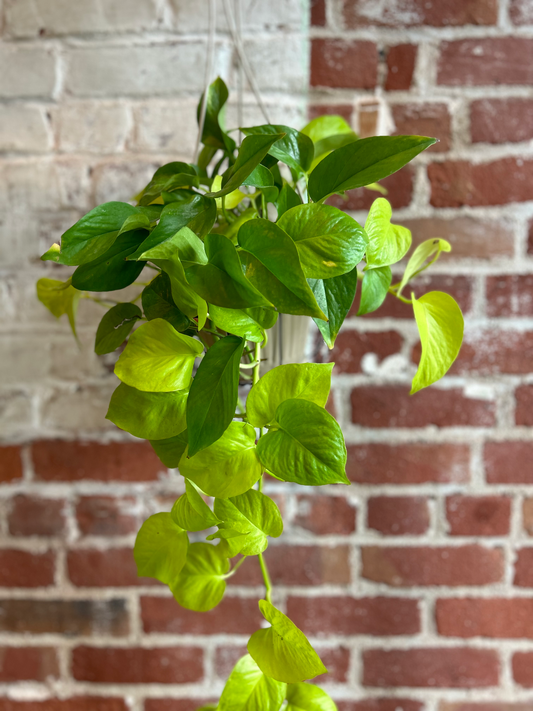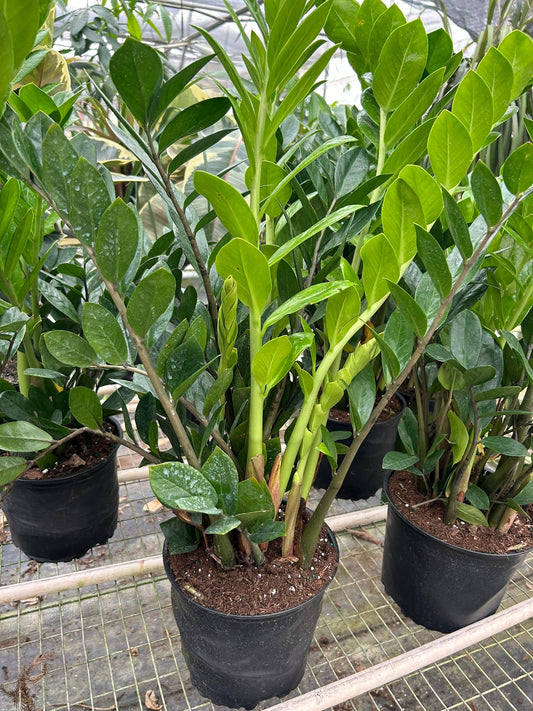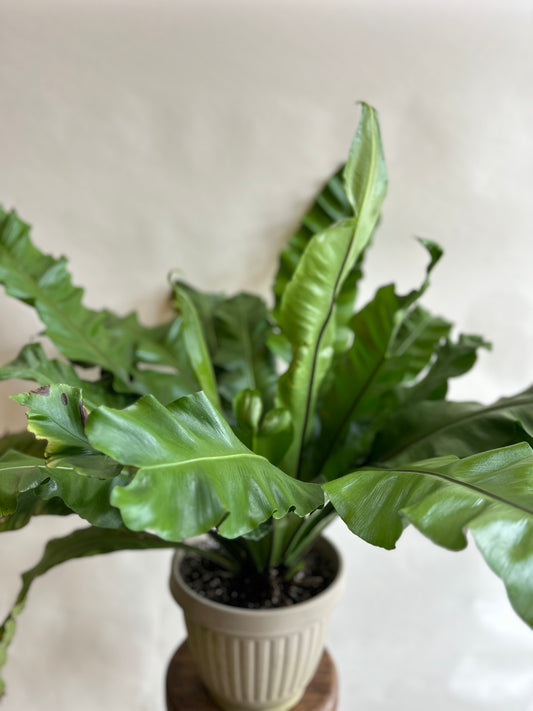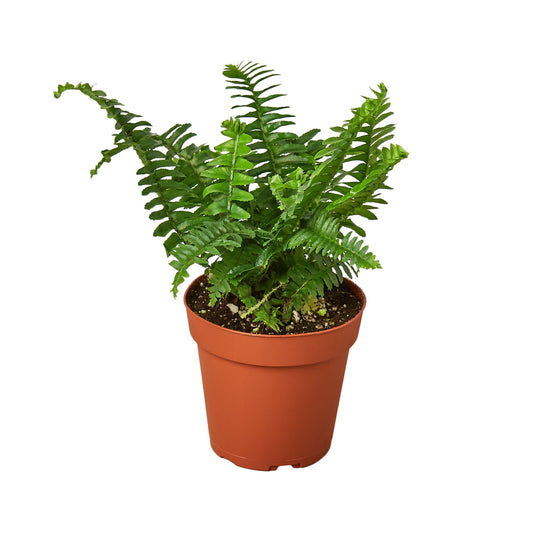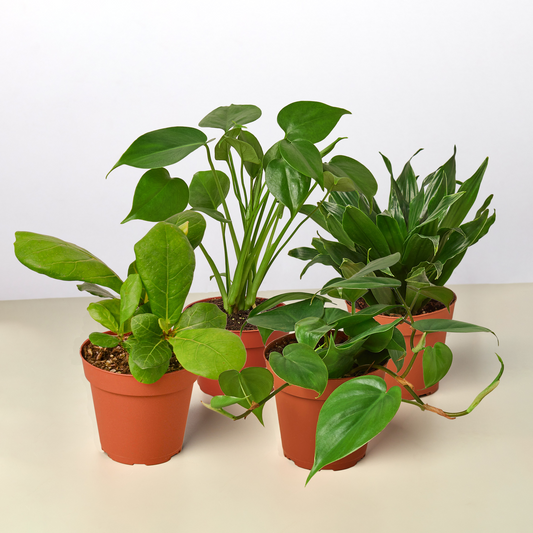What is the Best Soil Type for Silver Jade Plants?
Cafe Planta Team
If you're a fan of houseplants, you've probably encountered the charming and resilient Silver Jade Plant. Known for its silvery-green leaves and easygoing nature, this plant is a favorite among plant lovers. However, as with any plant, the type of soil you use can make all the difference in its growth and health.
In this article, we'll discuss everything you need to know about finding the right soil for your Silver Jade Plant. From understanding its basic needs to exploring various soil types and amendments, you'll be equipped with the knowledge to keep your plant thriving. So, let's get started!
Understanding the Silver Jade Plant's Needs
The Silver Jade Plant, also known as Crassula arborescens, is a succulent native to South Africa. Like many succulents, it has specific needs when it comes to soil and growing conditions. These plants are used to thriving in areas with well-draining soil, where they can soak up water quickly but not remain waterlogged. Too much moisture can lead to root rot, a common problem with succulents.
Understanding the natural environment of the Silver Jade Plant helps us recreate similar conditions at home. The plant's fleshy leaves store water, which means it prefers dry conditions over wet ones. This characteristic makes it crucial to choose a soil blend that doesn't retain excessive moisture.
Key Characteristics of Silver Jade Plants
- Thick, fleshy leaves that store water
- Preference for bright, indirect sunlight
- Need for well-draining soil to prevent root rot
- Tolerance for dry conditions
By keeping these characteristics in mind, you'll be better prepared to choose the right soil and care routine for your Silver Jade Plant.
What Makes a Good Soil Mix for Silver Jade Plants?
When it comes to selecting the best soil for your Silver Jade Plant, think about creating a mix that mimics its natural habitat. The goal is to provide a balance of drainage and nutrients without holding excess water. Let's break down what makes a soil mix suitable for these plants.
Drainage Is Key
Good drainage is the most important factor in a succulent soil mix. You want a soil that allows water to flow through quickly, leaving just enough moisture for the plant to absorb. This prevents water from sitting around the roots, which can lead to rot. To achieve this, the soil should be gritty and porous.
Lightweight and Nutrient-Rich
While succulents don't require rich, dense soil, they do benefit from a mix that includes some organic matter. This provides the necessary nutrients for growth while keeping the soil light. A well-balanced soil will support the plant's health without suffocating it.
Components of a Suitable Soil Mix
- Sand: Coarse sand helps improve drainage by creating air pockets within the soil.
- Perlite or Pumice: These materials add porosity and help in water drainage.
- Cactus Potting Mix: A ready-made option that often combines sand, perlite, and soil.
- Compost or Coco Coir: Adds organic matter for nutrients, but should be used sparingly.
Creating Your Own Soil Mix
If you're a DIY enthusiast, you might want to create your own soil mix for your Silver Jade Plant. This allows you to control the proportions of each component, ensuring the perfect balance for your plant's needs. Here's a simple recipe you can try:
DIY Silver Jade Plant Soil Recipe
- 2 parts coarse sand
- 2 parts perlite or pumice
- 1 part cactus potting mix
- 1 part compost or coco coir (optional)
Mix these ingredients well and test the drainage by watering a small amount. If the water drains quickly and the soil doesn't compact, you've got yourself a winner!
Benefits of Making Your Own Mix
Creating your own soil mix offers several benefits:
- Customization: Tailor the mix to your plant's specific needs.
- Cost-Effective: Often cheaper than buying pre-made mixes.
- Control: Choose quality ingredients and avoid additives.
This hands-on approach also gives you a deeper understanding of your plant's growing environment, which can be quite satisfying.
Store-Bought Soil Options
If you're not keen on mixing your own soil, there are plenty of store-bought options that work well for Silver Jade Plants. Many garden centers and plant shops offer specially formulated succulent and cactus mixes designed for optimal drainage and nutrient balance.
Choosing the Right Product
When selecting a store-bought soil mix, consider the following:
- Read the Label: Look for mixes labeled for succulents or cacti.
- Check Ingredients: Ensure the mix contains sand, perlite, or pumice for drainage.
- Avoid Additives: Steer clear of mixes with added fertilizers or moisture-retaining crystals.
These ready-made options can save time and effort, especially if you're new to plant care or prefer convenience.
Potting Your Silver Jade Plant
Once you've selected the perfect soil, it's time to pot your Silver Jade Plant. Potting correctly is just as important as choosing the right soil, as it ensures your plant has enough space to grow and the roots remain healthy.
Steps to Potting Your Silver Jade Plant
- Choose the Right Pot: Select a pot with drainage holes to prevent water accumulation.
- Prepare the Soil: Fill the pot with your chosen soil mix, leaving space for the plant.
- Position the Plant: Gently remove the plant from its current pot and place it in the new one.
- Fill and Settle: Add soil around the plant, pressing lightly to secure it.
- Water Sparingly: Water the plant lightly, allowing excess to drain out.
These steps ensure your Silver Jade Plant is well-supported and able to thrive in its new home.
Watering and Care Tips
Once your Silver Jade Plant is potted in the right soil, proper watering and care are essential to its health. Succulents like the Silver Jade Plant have specific watering needs that differ from other houseplants.
Watering Guidelines
- Less Is More: Allow the soil to dry out completely between waterings.
- Check Moisture Levels: Stick your finger into the soil; if it feels dry, it's time to water.
- Avoid Overwatering: Too much water can lead to root rot.
By following these guidelines, you'll be able to keep your plant healthy and prevent common issues associated with overwatering.
Common Soil-Related Issues
Even with the right soil and care, your Silver Jade Plant might encounter some problems. Being aware of common issues helps you address them quickly and keep your plant thriving.
Signs of Poor Soil Conditions
- Yellowing Leaves: Often a sign of overwatering or poor drainage.
- Root Rot: Caused by waterlogged soil; roots will appear mushy and black.
- Stunted Growth: Can occur if the soil lacks nutrients or is too dense.
If you notice any of these signs, consider repotting your plant in fresh, well-draining soil and adjusting your watering routine.
Enhancing Soil with Amendments
If you're looking to boost your soil's performance, consider using soil amendments. These additions can improve drainage, aeration, and nutrient content, giving your Silver Jade Plant an extra edge.
Types of Soil Amendments
- Perlite: Lightweight and improves drainage.
- Pumice: Provides aeration and retains some moisture.
- Vermiculite: Enhances water retention, but use sparingly.
- Charcoal: Helps with drainage and odor reduction.
Adding these amendments to your soil mix can make a noticeable difference in the health of your plant.
Final Thoughts
Choosing the right soil for your Silver Jade Plant is a fundamental part of ensuring its health and vitality. By focusing on well-draining soil, whether through a DIY mix or a store-bought option, you're setting your plant up for success. With proper potting and care, your Silver Jade Plant will thrive and bring joy to your home.
At Cafe Planta, we understand the joy that plants bring into our lives. We offer a variety of houseplants, plant care accessories, and plant-themed apparel. If you have any questions about your plant care journey, don't hesitate to email us, or send us a message on Instagram. We're here to help you create a thriving plant collection that connects you with nature and those around you.


